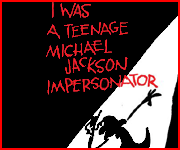( No Title )
*FRIENDS FORWARDED SOME PIECES O’ BLOGS & SUCH..
Subject: What’s Going On (In New Orleans)
Date: Fri, 2 Sep 2005 20:42:27 -0700 (PDT)
Baton Rouge is fine, despite many wild rumors.
I don’t recall things being so negative after the
earthquake, but then there weren’t tens of thousands
of people still stranded without food, water and
shelter in stupifyingly hot weather and filth for days
afterwards either.
It is truly horrifying.
A co-worker yesterday left about 10 a.m. after her
husband called and insisted she go home because there
was “civil unrest.” She left in tears saying, “I just
don’t want THOSE PEOPLE to ruin OUR CITY!” Talk about
horrifying.
The main shelter in our downtown civic center/arena is
being locked down at night “for everyone’s
protection.” People aren’t allowed to leave, or so I
understand. Some people — not all — are convinced
there are a bunch of thugs being sheltered there. The
reality is that the people there are the very lucky
ones who were able to get out before the storm, thus
people of some means, and the very lucky ones who were
airlifted off the rooves of their houses, again people
of some means who for whatever reason didn’t leave
before the storm but were subsequently flooded by the
levee break.
Perhaps I’ll blog this somewhere.
Sad but safe in BR,
L.
Friday, September 2, 2005
I just left New Orleans a couple hours ago. I traveled
from the apartment I was staying in by boat to a
helicopter to a refugee camp. If anyone wants to
examine the attitude of federal and state officials
towards the victims of hurricane Katrina, I advise you
to visit one of the refugee camps. In the refugee camp
I just left, on the I-10 freeway near Causeway,
thousands of people (at least 90% black and poor)
stood and squatted in mud and trash behind metal
barricades, under an unforgiving sun, with heavily
armed soldiers standing guard over them. When a bus
would come through, it would stop at a random spot,
state police
would open a gap in one of the barricades, and people
would rush for the bus, with no information given
about where the bus was going. Once inside (we were
told) evacuees would be told where the bus was taking
them – Baton Rouge, Houston, Arkansas, Dallas, or
other locations. I was told that if you boarded a bus
bound for Arkansas (for example), even people with
family and a place to stay in Baton Rouge would not be
allowed to get out of the bus as it passed through
Baton Rouge. You had no choice but to go to the
shelter in Arkansas. If you had people willing to come
to New Orleans to pick you up, they could not come
within 17 miles of the camp.
I traveled throughout the camp and spoke to Red Cross
workers, Salvation Army workers, National Guard, and
state police, and although they were friendly, no one
could give me any details on when buses would arrive,
how many, where they would go to, or any other
information. I spoke to the several teams of
journalists nearby, and asked if any of them had been
able to get any information from any federal or state
officials on any of these questions, and all of them,
from Australian tv to local Fox affiliates complained
of an
unorganized, non-communicative, mess. One cameraman
told me “as someone who’s been here in this camp for
two days, the only information I can give you is this:
get out by nightfall. You don’t want to be here at
night.”
There was also no visible attempt by any of those
running the camp to set up any sort of transparent and
consistent system, for instance a line to get on
buses, a way to register contact information or find
family members, special needs services for children
and infirm, phone services, treatment for possible
disease exposure, nor even a single trash can.
To understand this tragedy, its important to look at
New Orleans itself.
For those who have not lived in New Orleans, you have
missed a incredible, glorious, vital, city. A place
with a culture and energy unlike anywhere else in the
world. A 70% African-American city where resistance to
white supremecy has supported a generous, subversive
and unique culture of vivid beauty. From jazz, blues
and hiphop, to secondlines, Mardi Gras Indians,
Parades, Beads, Jazz Funerals, and red beans and rice
on Monday nights, New Orleans is a place of art
and music and dance and sexuality and liberation
unlike anywhere else in the world.
It is a city of kindness and hospitality, where
walking down the block can take two hours because you
stop and talk to someone on every porch, and where a
community pulls together when someone is in need. It
is a city of extended families and social networks
filling the gaps left by city, state and federal
goverments that have abdicated their responsibilty for
the public welfare. It is a city where someone you
walk past on the street not only asks how you are,
they wait for an answer.
It is also a city of exploitation and segregation and
fear. The city of New Orleans has a population of just
over 500,000 and was expecting 300 murders this year,
most of them centered on just a few, overwhelmingly
black, neighborhoods. Police have been quoted as
saying that they donÂ’t need to search out the
perpetrators, because usually a few days after a
shooting, the attacker is shot in revenge.
There is an atmosphere of intense hostility and
distrust between much of Black New Orleans and the
N.O. Police Department. In recent months, officers
have been accused of everything from drug running
tocorruption to theft. In seperate incidents, two New
Orleans police officers were recently charged with
rape (while in uniform), and there have been several
high profile police killings of unarmed youth,
including the murder of Jenard Thomas, which has
inspired ongoing
weekly protests for several months.
The city has a 40% illiteracy rate, and over 50% of
black ninth graders will not graduate in four years.
Louisiana spends on average $4,724 per child’s
education and ranks 48th in the country for lowest
teacher salaries. The equivalent of more than two
classrooms of young people drop out of Louisiana
schools every day and about 50,000 students are absent
from school on any given day. Far too many young black
men from New Orleans end up enslaved in Angola Prison,
a former slave plantation where inmates still do
manual farm labor, and over 90% of inmates eventually
die in the prison. It is a city where industry has
left, and most remaining jobs are are low-paying,
transient, insecure jobs in the service economy.
Race has always been the undercurrent of Louisiana
politics. This disaster is one that was constructed
out of racism, neglect and incompetence. Hurricane
Katrina was the inevitable spark igniting the gasoline
of cruelty and corruption. From the neighborhoods left
most at risk, to the treatment of the refugees to the
the media portayal of the victims, this disaster is
shaped by race.
Louisiana politics is famously corrupt, but with the
tragedies of this week our political leaders have
defined a new level of incompetence.
As hurricane Katrina approached, our Governor urged us
to “Pray the
> hurricane down” to a level two. Trapped in a
building two days
after the hurricane, we tuned our battery-operated
radio into local radio and tv stations, hoping for
vital news, and were told that our governor had called
for a day of prayer. As rumors and panic began to
rule, they was no source of solid dependable
information. Tuesday night, politicians and reporters
said the water level would rise another 12 feet –
instead it stabilized. Rumors spread like
wildfire, and the politicians and media only made it
worse.
While the rich escaped New Orleans, those with nowhere
to go and no way to get there were left behind. Adding
salt to the wound, the local and national media have
spent the last week demonizing those left behind. As
someone that loves New Orleans and the people in it,
this is the part of this tragedy that hurts me the
most, and it hurts me deeply.
No sane person should classify someone who takes food
from indefinitely closed stores in a desperate,
starving city as a “looter,” but thats just what the
media did over and over again. Sherrifs and
politicians talked of having troops protect stores
instead of perform rescue operations.
Images of New OrleansÂ’ hurricane-ravaged population
were transformed into black, out-of-control,
criminals. As if taking a stereo from a store that
will clearly be insured against loss is a greater
crime than the governmental neglect and incompetence
that did billions of dollars of damage and destroyed a
city. This media focus is a tactic,just as the
eighties focus on “welfare queens” and
“super-predators” obscured the simultaneous and much
larger crimes of the Savings and Loan scams and mass
layoffs, the hyper-exploited people of New
Orleans are being used as a scapegoat to cover up much
larger crimes.
City, state and national politicians are the real
criminals here. Since at least the mid-1800s, its been
widely known the danger faced by flooding to New
Orleans. The flood of 1927, which, like this week’s
events, was more about politics and racism than any
kind of natural disaster, illustrated exactly the
danger faced. Yet government officials have
consistently refused to spend the money to protect
this poor, overwhelmingly black, city. While FEMA and
others warned of the urgent impending danger to New
Orleans and put forward proposals for funding to
reinforce and protect the city, the Bush
administration, in every year since 2001, has cut or
refused to fund New Orleans flood control, and ignored
scientists warnings of increased hurricanes as a
result of global warming. And, as the dangers rose
with the floodlines, the lack of coordinated response
dramatized vividly the callous disregard of our
elected leaders.
The aftermath from the 1927 flood helped shape the
elections of both a US President and a Governor, and
ushered in the southern populist politics of Huey
Long.
In the coming months, billions of dollars will likely
flood into New Orleans. This money can either be spent
to usher in a “New Deal” for the city, with public
investment, creation of stable union jobs, new
schools, cultural programs and housing restoration, or
the city can be “rebuilt and revitalized” to a shell
of its former self, with newer hotels, more casinos,
and with chain stores and theme parks replacing the
former neighborhoods, cultural centers and corner jazz
clubs.
Long before Katrina, New Orleans was hit by a
hurricane of poverty, racism, disinvestment,
de-industrialization and corruption. Simply the damage
from this pre-Katrina hurricane will take billions to
repair.
Now that the money is flowing in, and the worldÂ’s
eyes are focused on Katrina, its vital that
progressive-minded people take this opportunity to
fight for a rebuilding with justice. New Orleans is a
special place, and we need to fight for its rebirth.
J.F.





Recent Comments